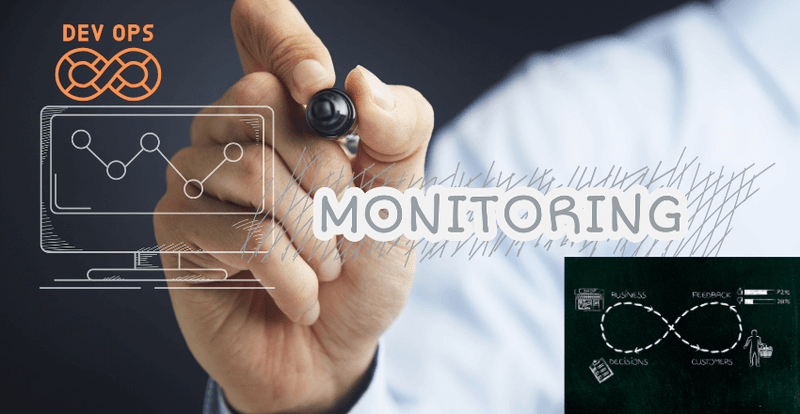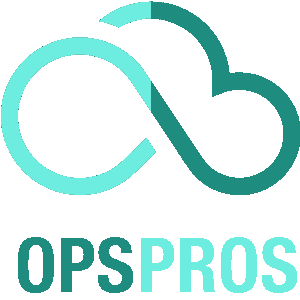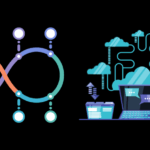
DevOps adoption has become essential for organizations seeking to achieve faster software delivery, higher quality, and improved customer satisfaction. However, DevOps implementation poses several challenges that organizations must address to realize its benefits fully.
These challenges include cultural resistance, toolchain complexity, lack of collaboration between teams, and the need to maintain security and compliance.
Key Takeaways:
- DevOps implementation presents several challenges that can hinder its benefits.
- Cultural resistance, toolchain complexity, lack of collaboration between teams, maintaining security, and compliance pose the most common challenges.
- Adopting best practices such as fostering a collaborative culture, streamlining the toolchain, automating processes, ensuring security and compliance, scaling for growth, and continuous learning and improvement can help overcome these challenges.

Understanding DevOps Challenges
DevOps is a methodology that promotes collaboration between software development and IT operations teams, aiming to deliver high-quality software faster and more reliably. However, implementing DevOps can be challenging, especially in large-scale organizations or those that are resistant to change.
The following are some of the most common DevOps challenges:
| Challenge | Description |
|---|---|
| Cultural resistance | Resistance to change and lack of buy-in from stakeholders can impede DevOps adoption. |
| Toolchain complexity | A complex toolchain with numerous tools and technologies can be challenging to integrate and manage. |
| Lack of collaboration | DevOps demands close collaboration between development, operations, security, and other teams, which can be difficult to achieve without proper communication and alignment. |
These obstacles can lead to delays, errors, and lower-quality output. However, with the right strategies and best practices, these challenges can be overcome.
Building a Culture of Collaboration
In DevOps, effective collaboration is key to success. However, achieving a collaborative culture can be a challenge, especially when teams are used to working in silos. Below are some strategies for breaking down these silos and creating a culture of collaboration:
- Encourage communication: Establish open lines of communication between teams. Use tools such as messaging apps, video conferencing software, and collaborative platforms to facilitate ongoing communication. Encourage team members to share knowledge and best practices.
- Break down barriers: In DevOps, there should be no “us” and “them”. Encourage cross-functional teams and foster a spirit of cooperation between development, operations, and other teams involved.
- Align goals: Ensure all teams are aligned and working towards the same goals. Establish shared KPIs and metrics to measure progress and success.
- Invest in training: Invest in training and development programs to help team members develop new skills and stay up-to-date with industry trends. Encourage continuous learning and create opportunities for professional growth.
- Celebrate successes: Recognize and celebrate successes, both big and small. This helps to build morale and reinforces the importance of collaboration in achieving shared goals.
By fostering a culture of collaboration, teams can work together more effectively and overcome DevOps challenges such as cultural resistance and lack of communication.
Streamlining the Toolchain

DevOps toolchain complexity can lead to significant challenges for organizations looking to implement the methodology. Integrating different tools and technologies while ensuring they work together cohesively can be a daunting task. The good news is that there are effective ways to streamline the toolchain and overcome the obstacles that come with it.
Assess Your Current Toolchain
The first step in streamlining your DevOps toolchain is to assess your current setup. Evaluate each tool you are currently using and its functionality, then identify any redundancies or inefficiencies. Determine which tools are essential and which can be replaced or removed without impacting functionality.
Choose the Right Tools
Once you have assessed your current toolchain, it’s time to choose the right tools for your organization’s needs. Look for tools that integrate seamlessly and have robust automation capabilities. It’s also important to choose tools that are scalable and can handle the growth of your organization over time.

Implement Automation
Implementing automation in your DevOps toolchain is essential to streamlining your processes. Automation can help eliminate manual errors and increase efficiency, allowing your team to focus on higher-value tasks. Consider implementing tools such as Jenkins or Ansible to automate your build, test, and deployment processes.
Standardize Your Processes
Standardizing your processes can help ensure that all team members are using identical tools and workflows. This can lead to more efficient communication and collaboration, as well as faster problem resolution. Choose a standardized set of tools and processes that work for your organization and ensure that all team members are trained on their usage.
Continuously Evaluate and Improve
Finally, it’s important to continuously evaluate and improve your DevOps toolchain. Regularly assess your processes and tools to ensure they are meeting your needs and identify any areas for improvement. This can help improve efficiency, reduce errors, and ensure ongoing success in your DevOps implementation.
Automating Processes
One of the biggest challenges in DevOps is the need for continuous process improvement and automation. In today’s fast-paced software delivery environment, manual processes can cause bottlenecks, errors and delays, which can lead to reduced productivity and increased costs.
Process automation in DevOps can help overcome these challenges by providing a more streamlined, efficient approach to software development and delivery.
Benefits of Process Automation in DevOps
There are many benefits of process automation in DevOps that make it an essential part of any software delivery pipeline. Here are some of the key benefits:
- Increased Efficiency: Automation reduces the need for human intervention, allowing for faster and more consistent delivery.
- Improved Quality: Automated testing ensures that code is error-free and meets quality standards, reducing the risk of bugs and defects.
- Faster Time to Market: Automated processes enable faster delivery and deployment, reducing time to market for new features and applications.
- Lower Costs: Automation reduces the need for manual labor, which can result in lower costs, higher productivity and faster ROI.
Examples of Process Automation Frameworks

There are many process automation frameworks available in the market that can help organizations streamline their DevOps processes. Here are some of the most popular ones:
| Framework | Description |
|---|---|
| Jenkins | An open-source automation server that supports the entire DevOps delivery pipeline. |
| Ansible | A configuration management tool that enables automation of application deployment, configuration and orchestration. |
| Puppet | A configuration management tool that allows for consistent infrastructure configuration across multiple servers. |
| Chef | A configuration management tool that automates infrastructure configuration, allowing for faster application delivery. |
Industry Trends in Process Automation
One of the most significant trends in process automation is the growing use of artificial intelligence and machine learning algorithms. These technologies can help organizations automate complex decision-making processes, enabling faster and more accurate software delivery.
Another trend is the adoption of containerization technologies like Docker and Kubernetes, which simplify the deployment and management of applications by packaging them into lightweight, portable containers.
As the software delivery landscape continues to evolve, process automation will remain a critical component of any successful DevOps strategy. By leveraging automation frameworks, organizations can streamline their processes, reduce costs and improve the overall quality of their software delivery.
Security and Compliance

One of the biggest challenges in adopting DevOps is ensuring security and compliance. As organizations move towards faster and more agile release cycles, it is crucial to maintain the security of the applications and systems being deployed.
However, with the rapid pace of development and deployment, security can often take a backseat. This can lead to vulnerabilities and breaches that can be costly in terms of both finances and reputation.
Implementing Security Measures
Implementing security measures is critical for DevOps success. This includes embedding security practices into the development process, such as code scanning and security testing. These measures should be automated wherever possible, to ensure continuous monitoring and protection.
Another important aspect of security is maintaining compliance with regulatory standards. Organizations need to be aware of the specific regulations that apply to their industry, and ensure that all systems and processes are up to date and compliant with these standards.
This example focuses on using SonarQube for static code analysis and OWASP ZAP for dynamic security testing.
J
enkinsfile Example with SonarQube and OWASP ZAP Integration
pipeline {
agent any
// Define tools versions
tools {
maven 'Maven 3.6.3'
jdk 'OpenJDK 11'
}
stages {
stage('Checkout') {
steps {
// Check out source code from version control
checkout scm
}
}
stage('Static Code Analysis with SonarQube') {
steps {
// Run SonarQube scanner
script {
withSonarQubeEnv('SonarQubeServer') {
sh 'mvn clean verify sonar:sonar'
}
}
}
}
stage('Dynamic Security Testing with OWASP ZAP') {
steps {
// Assuming OWASP ZAP is set up to run as a daemon on a known host
sh '''
zap-cli start --start-options '-config api.disablekey=true'
zap-cli open-url http://your-application-url.com
zap-cli spider http://your-application-url.com
zap-cli active-scan --recursive http://your-application-url.com
zap-cli report -o zap-report.html -f html
zap-cli stop
'''
// Archive the ZAP report
archiveArtifacts artifacts: 'zap-report.html', fingerprint: true
}
}
stage('Deploy') {
steps {
// Deploy your application
sh './deploy.sh'
}
}
}
post {
always {
// Include steps to clean up or notify based on the outcome of the pipeline
echo 'The pipeline execution is complete.'
}
}
}
Key Components:
- Static Code Analysis with SonarQube: This stage integrates SonarQube into the pipeline for static code analysis. It scans the code for vulnerabilities, code smells, and compliance issues. The
withSonarQubeEnv('SonarQubeServer')block ensures the scanner uses the correct SonarQube server configuration. - Dynamic Security Testing with OWASP ZAP: This stage uses OWASP ZAP for dynamic security testing. It starts ZAP as a daemon, opens the target application URL for scanning, performs both spidering and active scanning to discover vulnerabilities, generates a report in HTML format, and then stops ZAP. The generated report is archived for review.
This example assumes that both SonarQube and OWASP ZAP are configured and accessible to the Jenkins environment. Adjustments may be necessary based on your specific setup, including network configurations, authentication requirements, and target application URLs.
Maintaining Agility and Speed
While implementing security measures and ensuring compliance are critical, it is also important to maintain the agility and speed that DevOps is known for. To achieve this balance, security needs to be integrated into the DevOps process from the start, rather than being an afterthought.
This can be achieved by incorporating security best practices into the overall DevOps pipeline, using automation and orchestration technologies to streamline the process. For example, security scans and vulnerability testing can be integrated into the CI/CD pipeline, allowing for quick and automated detection and remediation of security issues.
Ensuring security and compliance in a DevOps environment is crucial for success. By implementing security measures and maintaining compliance with regulatory standards, organizations can minimize the risk of security breaches while maintaining the agility and speed that DevOps offers.
With the right tools and strategies in place, security can be integrated seamlessly into the DevOps process, ensuring that applications are secure, compliant, and ready for deployment.

Scaling DevOps for Growth
As organizations grow and expand, their DevOps practices must evolve and scale accordingly. However, scaling DevOps can present new challenges and obstacles that must be overcome to ensure continued success.
DevOps challenges: Some of the common challenges of scaling DevOps include managing infrastructure, optimizing resources, and addressing scalability issues.
One of the key strategies for scaling DevOps is to implement processes and tools that can handle an increasing number of applications and services. This includes automating infrastructure provisioning and deployment, utilizing containerization technologies, and adopting a microservices architecture.
Another important consideration when scaling DevOps is to maintain collaboration and communication between teams. As the organization grows, it can become more challenging to ensure that all teams are aligned and working towards the same goals. Implementing a culture of collaboration and utilizing cross-functional teams can help to mitigate these challenges.
It’s also important to prioritize and optimize resources when scaling DevOps. This includes identifying and resolving bottlenecks, utilizing cloud resources effectively, and implementing performance monitoring and optimization tools.
Overcoming DevOps obstacles: When scaling DevOps, it’s crucial to address potential obstacles such as lack of standardization, legacy systems, and limited resources. To overcome these obstacles, organizations can adopt best practices such as implementing a DevOps roadmap, prioritizing automation, and utilizing a continuous learning and improvement mindset.
By utilizing these strategies and best practices, organizations can successfully scale their DevOps practices to support business growth and meet increasing demands.
Continuous Monitoring and Feedback Loops

Continuous monitoring and feedback loops are essential components of a successful DevOps practice. This process involves the use of tools and techniques to continuously monitor the performance of an application or system and provide real-time feedback to the development team. This helps to identify issues early and enables the team to take corrective action quickly.
Continuous monitoring can help DevOps teams to overcome challenges such as downtime, slow response times, and security breaches. By monitoring performance metrics such as CPU usage, network traffic, and disk space utilization, teams can identify potential problems before they occur. This helps to prevent downtime and minimize the impact of any issues that do occur.
Feedback loops are also critical to the success of DevOps. By gathering feedback from end-users and stakeholders, teams can make informed decisions about how to improve the application or system. This helps to ensure that the application or system meets the needs of its users and is optimized for performance.
There are several tools available for continuous monitoring and feedback loops in DevOps. For example, APM (Application Performance Management) tools can monitor the performance of an application in real-time, while log monitoring tools can provide insight into how the application is behaving. Feedback can be gathered through various channels such as surveys, user feedback forms, or through support tickets.
In conclusion, continuous monitoring and feedback loops are critical to the success of DevOps. By implementing these practices, teams can identify and address issues early, improve performance, and ensure that the application or system meets the needs of its users.
Agile Release Management
Release management is a critical aspect of DevOps, and agile practices can help overcome the associated challenges. Agile release management aims to allow for continuous delivery and deployment, making the process more efficient and error-free.
The key focus of agile release management is on continuous iteration and improvement. It involves breaking down software releases into smaller, manageable chunks and testing them continuously. This approach allows for easier identification and resolution of issues, resulting in a more stable and reliable release.
The following are some best practices for implementing agile release management in a DevOps environment:
- Automate the release process: Automate the process of building, testing, and deploying releases to reduce manual errors and save time.
- Ensure continuous communication: Foster communication and collaboration between development, operations, and other teams involved in the release management process.
- Have a clear and defined release plan: Create a roadmap that outlines the release plan, timelines, and milestones to ensure everyone involved is on the same page.
- Implement continuous feedback loops: Gather feedback from users and stakeholders and integrate it into the release process to improve the quality of releases.
- Automate the rollback process: Implement a robust rollback plan that automates the process of rolling back to previous releases in case of any issues.
Implementing agile release management practices can result in faster time to market, increased reliability, and higher customer satisfaction.
Continuous Learning and Improvement
Continuous learning and improvement are critical to achieving success in a DevOps environment. As teams work together to deliver software faster and more efficiently, they must also remain committed to ongoing learning and improvement.
Continuous learning involves keeping up with new developments in technology, methodologies, and best practices in the industry. It means staying ahead of the curve and being proactive in identifying opportunities for improvement.
Continuous improvement involves analyzing performance metrics, identifying areas for improvement, and implementing changes that lead to better outcomes. It means embracing a culture of experimentation, where teams can try new approaches and learn from their mistakes.
One of the best ways to promote continuous learning and improvement is to embrace a learning culture. This means encouraging team members to pursue professional development opportunities, attend industry conferences, and participate in communities of practice.
Another important practice is to use metrics and analytics to measure performance and identify areas for improvement. This can involve tracking key performance indicators (KPIs) such as deployment frequency, lead time, and change failure rate.
It is also important to integrate feedback from stakeholders into the continuous learning and improvement process. This can involve soliciting feedback from end-users, stakeholders, and other teams involved in the product development lifecycle.
By embracing continuous learning and improvement, DevOps teams can stay ahead of the curve and maintain a competitive edge in today’s rapidly changing business environment.
Wrapping Up

Successfully implementing DevOps can be challenging and complex due to the numerous obstacles that organizations face. However, by adopting the best practices and strategies discussed in this article, organizations can overcome these challenges and fully realize the benefits of DevOps.
From building a culture of collaboration to continuous learning and improvement, each of the best practices discussed is critical to achieving success in DevOps. By streamlining the toolchain and automating processes, organizations can also achieve greater efficiency, speed, and agility in software development and deployment.
Ensuring security and compliance in DevOps is also a critical challenge that must be addressed. Organizations must implement appropriate security measures and regulatory compliance while maintaining agility and speed.
Scaling DevOps for growth and managing infrastructure, optimizing resources, and addressing scalability challenges are also critical to success in DevOps. Continuous monitoring and feedback loops, as well as agile release management, can also help organizations achieve success in DevOps.
Finally, continuous learning and improvement are key to DevOps success. Integrating metrics and analytics and fostering a learning culture can help organizations continuously enhance their DevOps processes and achieve better outcomes.
By adopting these best practices, organizations can successfully overcome DevOps challenges and reap the benefits of this transformative approach to software development and deployment.
External Resources
FAQ
1. How can I manage configuration drift in my environments?
Challenge: Configuration drift occurs when differences in software or configurations lead to inconsistencies across environments, potentially causing failures in production.
Solution: Using Infrastructure as Code (IaC) tools like Ansible to ensure consistent configurations across all environments.
Ansible Playbook Example for Consistent Configuration:
---
- name: Ensure web server configurations are consistent
hosts: webservers
vars:
http_port: 80
max_clients: 256
tasks:
- name: Install nginx
ansible.builtin.yum:
name: nginx
state: present
- name: Deploy standardized nginx configuration file
ansible.builtin.template:
src: /path/to/nginx.conf.j2
dest: /etc/nginx/nginx.conf
notify:
- restart nginx
handlers:
- name: restart nginx
ansible.builtin.service:
name: nginx
state: restartedThis Ansible playbook installs nginx and deploys a standardized configuration file, ensuring that the web server’s configuration is consistent across all servers in the webservers group.
2. How do I automate the rollback of a failed deployment?
Challenge: Quickly rolling back a failed deployment is crucial to minimize downtime and maintain service availability.
Solution: Implementing automated rollback procedures in your CI/CD pipeline. The following Jenkins pipeline snippet demonstrates a basic rollback strategy.
Jenkinsfile Example for Automated Rollback:
pipeline {
agent any
stages {
stage('Deploy') {
steps {
sh './deploy.sh'
}
post {
failure {
sh './rollback.sh'
echo 'Deployment failed. Rolling back to previous stable version.'
}
}
}
}
}This Jenkins pipeline attempts to deploy the application using deploy.sh. If the deployment fails, it automatically executes rollback.sh to revert to the previous stable version.
3. How do I ensure my monitoring tools are effectively detecting system anomalies?
Challenge: Effectively configuring monitoring tools to detect and alert on system anomalies before they impact users.
Solution: Integrating and configuring Prometheus with Alertmanager for monitoring and alerting based on custom metrics that indicate system health.
Prometheus Alert Rule Example:
groups:
- name: example
rules:
- alert: HighRequestLatency
expr: job:request_latency_seconds:mean5m{job="myjob"} > 0.5
for: 10m
labels:
severity: page
annotations:
summary: High request latency detected
description: "Request latency is higher than 0.5s (current value: {{ $value }}s)"This Prometheus configuration defines an alert for high request latency, triggering if the average latency exceeds 0.5 seconds over a 5-minute period. When this condition is met for more than 10 minutes, Alertmanager sends out an alert.
These code samples address common DevOps challenges by leveraging automation and best practices to maintain consistency, ensure rapid recovery from failures, and effectively monitor system performance and health.

James is an esteemed technical author specializing in Operations, DevOps, and computer security. With a master’s degree in Computer Science from CalTech, he possesses a solid educational foundation that fuels his extensive knowledge and expertise. Residing in Austin, Texas, James thrives in the vibrant tech community, utilizing his cozy home office to craft informative and insightful content. His passion for travel takes him to Mexico, a favorite destination where he finds inspiration amidst captivating beauty and rich culture. Accompanying James on his adventures is his faithful companion, Guber, who brings joy and a welcome break from the writing process on long walks.
With a keen eye for detail and a commitment to staying at the forefront of industry trends, James continually expands his knowledge in Operations, DevOps, and security. Through his comprehensive technical publications, he empowers professionals with practical guidance and strategies, equipping them to navigate the complex world of software development and security. James’s academic background, passion for travel, and loyal companionship make him a trusted authority, inspiring confidence in the ever-evolving realm of technology.






